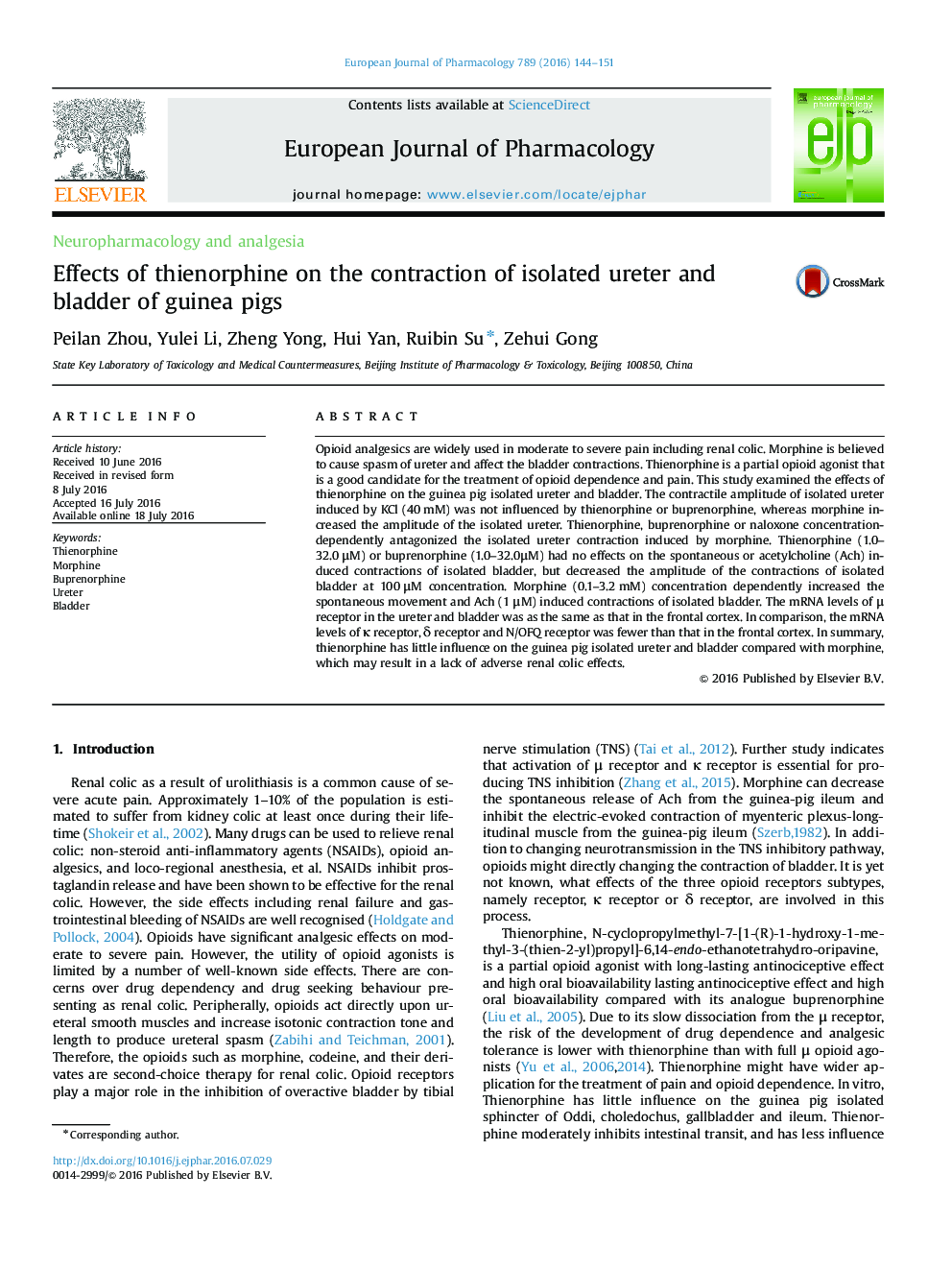| Article ID | Journal | Published Year | Pages | File Type |
|---|---|---|---|---|
| 2530823 | European Journal of Pharmacology | 2016 | 8 Pages |
Opioid analgesics are widely used in moderate to severe pain including renal colic. Morphine is believed to cause spasm of ureter and affect the bladder contractions. Thienorphine is a partial opioid agonist that is a good candidate for the treatment of opioid dependence and pain. This study examined the effects of thienorphine on the guinea pig isolated ureter and bladder. The contractile amplitude of isolated ureter induced by KCl (40 mM) was not influenced by thienorphine or buprenorphine, whereas morphine increased the amplitude of the isolated ureter. Thienorphine, buprenorphine or naloxone concentration-dependently antagonized the isolated ureter contraction induced by morphine. Thienorphine (1.0–32.0 μM) or buprenorphine (1.0–32.0μM) had no effects on the spontaneous or acetylcholine (Ach) induced contractions of isolated bladder, but decreased the amplitude of the contractions of isolated bladder at 100 μM concentration. Morphine (0.1–3.2 mM) concentration dependently increased the spontaneous movement and Ach (1 μM) induced contractions of isolated bladder. The mRNA levels of μ receptor in the ureter and bladder was as the same as that in the frontal cortex. In comparison, the mRNA levels of κ receptor, δ receptor and N/OFQ receptor was fewer than that in the frontal cortex. In summary, thienorphine has little influence on the guinea pig isolated ureter and bladder compared with morphine, which may result in a lack of adverse renal colic effects.
Graphical abstractFigure optionsDownload full-size imageDownload high-quality image (223 K)Download as PowerPoint slide
